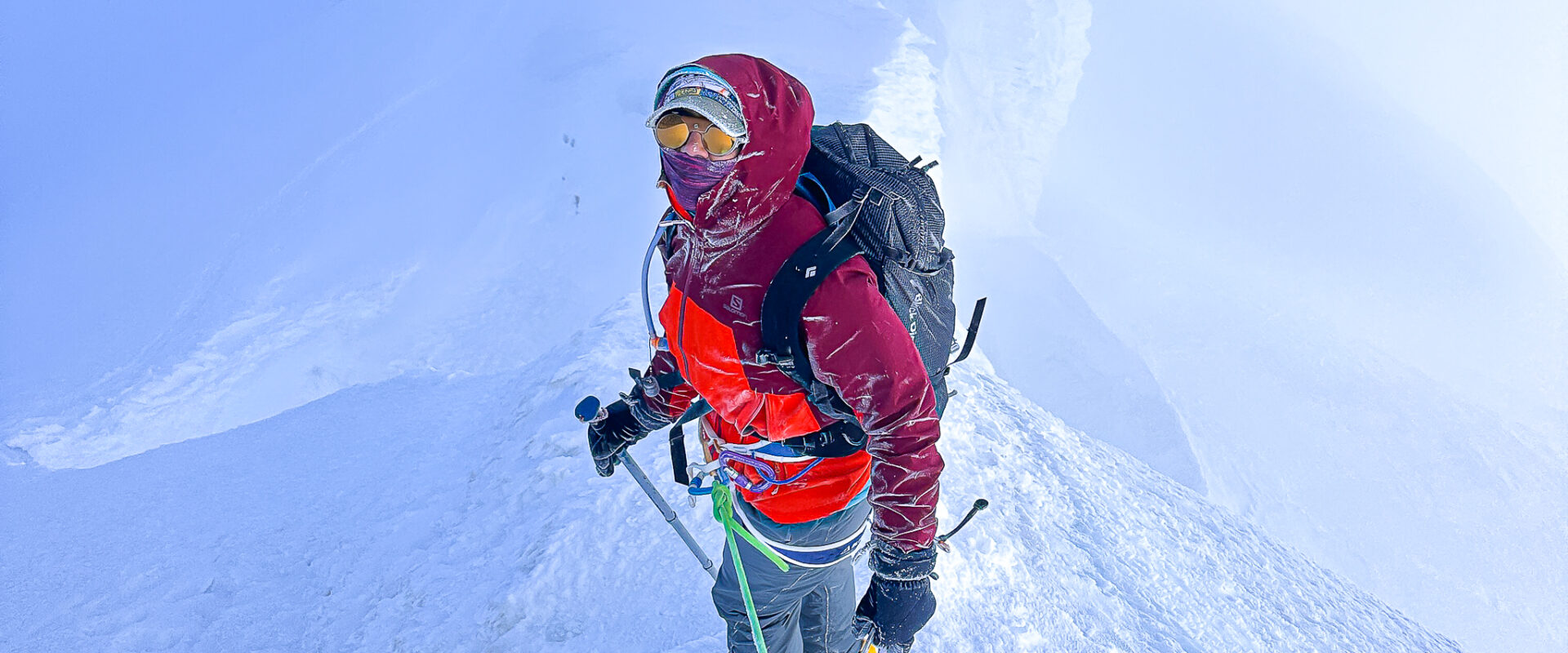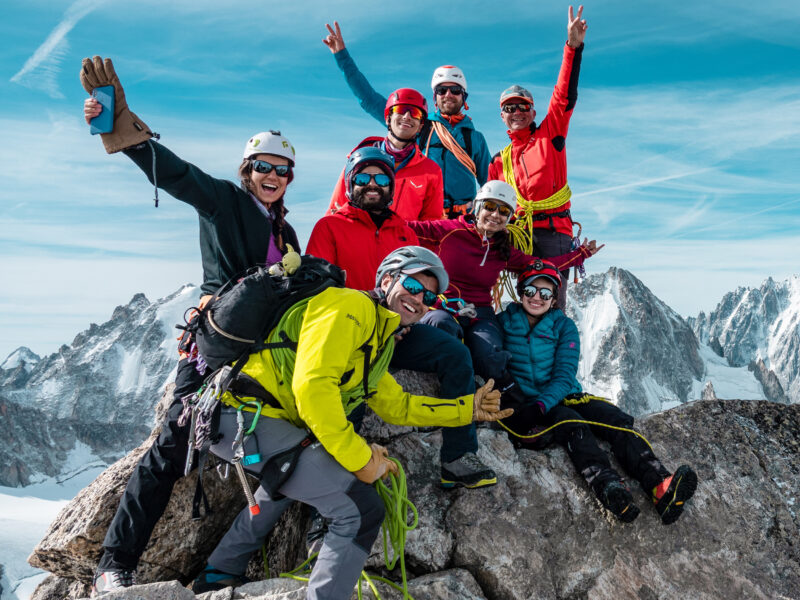BY Rami Rasamny | July 15 2023
The Subtle Art of Turning Around

The weather came in suddenly and unexpectedly. Two rope parties had already reached the summit, with two more just a few hundred meters away. Our teams had put years of training into making these last steps a reality, and here we were, watching it all slip away. Then it happened. The call came from the most senior mountaineer among us. “We have to turn around.” And so, we did.
The single most valuable lesson in a mountaineer’s career is found in the first time they turn around. The earlier that happens, the easier it will be for the lessons embedded in those difficult moments to be learned.
At the time of writing, I’ve just had to brief one of our teams on why the Mont Blanc Summit is not possible. A combination of slow skills progress and sketchy conditions in the Grand Couloir, an infamous section of rockfall danger, necessitated a retreat from the original plan in favor of the less technical, but certainly no less spectacular, Monte Rosa.
That conversation is common, but that doesn’t make it easy. In most cases, people take it on the chin. Some feel sad or even angry. That’s totally normal. Who wants to have their goals taken away from them so suddenly? But generally, there’s an acceptance of it in the moment and a morphing of that moment into something of immense value to the individual as time progresses. Turning around speaks to one of the most fundamental lessons in mountaineering and indeed in life: that the aim of this game is not to summit every mountain but to stay in the mountains for as long as possible. They may sound the same, but they couldn’t be more different.
There is No Place for Arrogance
“I’ve never been turned around before. You should have said this was a possibility when people sign up.” “I’ll pay double.” “I don’t care. I’m going.” These are just some of the lines that have been delivered to me in the frenzy of so-called “summit fever.” It’s actually these recent collection of highly charged exchanges that inspired me to really consider the words and try to understand them beyond just a cursory rejection of adrenaline fulled fervor. The truth is that none of these people were wrong to be angry. They aren’t wrong to express themselves in the way that they have because their mountain experiences have just never collided with the inevitability of eventually turning around until now, and the later in life we experience it, the harder it is to accept it.
When we turn around it isn’t failure. It’s a recognition that the aim of the game is not to win at every attempt. The aim of the game is to stay in the game and keep on playing. You can’t do that if you choose to go to the top no matter what. The mountain wins. The mountain always wins. And for some of us, we may never realize it until it happens. In that moment we would have wished that our ignorance was tempered by education and our arrogance was tamed by the learned who stared into the abyss before us and who were spared to tell the tail.
The Mountain is Not a KPI
Generally speaking, the people who can afford to be on adventure experiences in altitude environments are usually quite determined in their own right. They’ve made their careers or secured their sponsorships by fighting hard for what they want, and summits can sometimes feel like just another KPI to deliver on. “Why do you want to climb the Mont Blanc?” I would often ask people I meet at the Tete Rousse or Gouter Huts. “Because it’s the highest.” “To tick it off the list.” Usually it’s some combination or derivation of these two sentences.
What we don’t often realize is that this pile of rock and ice couldn’t give a sh!t about your deliverables, your intentions, or how much effort you put into it. If it’s not happening, it’s not happening. If anyone is in any doubt, go face down the rockfalls of the couloir and let us know how that works out for you.
Turning around teaches us to be humble and to accept the randomness in the universe. That’s not the same as accepting failure. I’m not for advocating that at all. It is to learn to keep going forward and find new paths in the face of challenges that may come from places we least expect.
The Universe Has It’s Own Plans
The universe is a random and wild place. Sometimes the summer season produces winter conditions. Other times the glacier is so dry by June that summer routes are impossible to access. Sometimes the conditions are perfect but our bodies aren’t ready. Sometimes our bodies are in the best shape possible but our minds aren’t in the game. The only certainty that exists is the uncertainty of existence.
Turning around when the stars don’t align is the hallmark of the experienced mountaineer and indeed the experienced and awake human being. Going as far as you can go without considering the way back or the potential for the elements to intervene against you isn’t foolish or folly. It’s junvenile. It represents a nascent and infantile understanding of where our faculties need to be when we choose to take on the responsibility of our explorations. Accepting this uncertainty is choosing to accept that our trajectories must forever be malleable to the randomness of existence.
Tending towards a summit or an ideal is the pathway to growth and becoming, but the trail towards it is not the singular, unidirectional line you believe it to be. It will need to change and adapt as the plan collides with the reality of the universe. Never forget that.
Aim to Stay in the Game
The mountaineer has goals. The mountaineer fights to achieve them. But above all else, the mountaineer wishes to stay in the mountains for as long as possible. To do that, we must learn to accept that we won’t summit every mountain, we won’t achieve every goal, and we won’t be able to blame customer service for the lessons we failed to learn.














